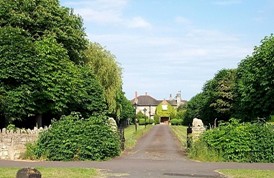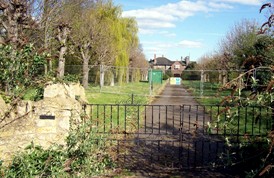|
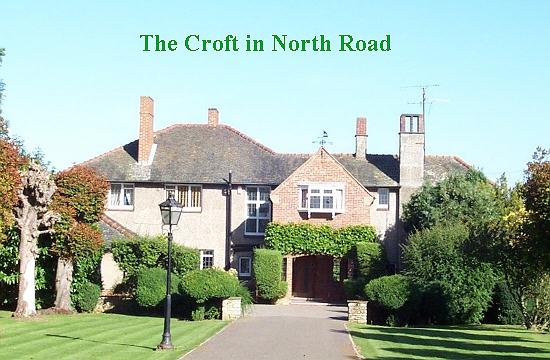
One of the
largest, and later most controversial, properties in Bourne is The Croft in
North Road. This imposing house was built in 1922, standing in its own
grounds and approached from the main road by a driveway with an attractive
avenue of chestnut trees.
It was built as a family home by Richard Boaler Gibson, a wealthy corn
merchant, who died on 9th July 1958. It was subsequently sold in August
1960 for £8,000 (£160,000 at today's values) when it comprised an entrance
hall, cloak room, lounge, dining room, two kitchens, five bedrooms, a
dressing room and a large bathroom. There was also a detached garage for
two cars and a well-cared for tennis court. Grassland through which there
were two rights of way from North Road, covered more than seven acres and
there was also a sheltered orchard with a variety of mature fruit trees.
The house was bought by Mr Andrew Cooke, a local businessman and
landowner, who considerably enhanced the property during his forty year
tenure. One of the more interesting features he introduced was the
erection of three Victorian cast iron gas lamps along the main drive,
rescued from the railway station at Bourne when it was demolished in 1964
and converted to electricity to light the way for visitors on dark
evenings. Mr Cooke left Bourne in 2004 to live in Norfolk and the house
subsequently became the centre of a public wrangle over house building on
the surrounding meadowland.
But in December 2009, Longhurst Group was
given planning permission to convert the grounds into a
residential estate of 68 bungalows for elderly retired people with the
house refurbished for use as a community centre. Work
began in May 2011 and by the autumn of 2014, the development was nearing
completion and most of the bungalows were occupied.
|
NO MANORIAL STATUS FOR THE CROFT |
|
The metamorphosis of a five-bedroom residence
into the Manor House of Bourne was soon apparent with lavish
advertising in our local newspapers in readiness for a formal
opening in the autumn of 2012 when The Croft suddenly became "the
old manor house".
We advised the developers that the use of this description for a
very ordinary and comparatively new property was incorrect but to no
avail and advertisements continued to appear, one even with the
whimsical phrase, “To the Manor Bourne”, in an attempt to attract
prospective buyers to what purported to be an ancient site.
The dictionary definition of manor house is the former home of a
lord of the manor which was not the case here. This was a relatively
modern property standing in seven acres of land and dating from
1922, a town house built as a family home for modern living by local
farmer and corn merchant Richard Gibson (1879-1958) with no
connection whatsoever with either of our two ancient manors, those
of Bourne and Bourne Abbots, both of which date back to mediaeval
times and to call The Croft a manor house may be an attractive
marketing ploy for the £8 million development but was and is a
misnomer.
Richard Gibson chose The Croft as a suitable name because it fitted
the design, the original meaning being an enclosed plot of land
adjoining a house occupied by the owner. Admittedly it was a
spacious property comprising an entrance hall, cloakroom, lounge,
dining room, two kitchens, five bedrooms, a dressing room and a
large bathroom while outside was a detached garage for two cars, a
tennis court and grassland. But it has no claims to antiquity and
the term manor house is totally unjustified.
Nevertheless, it has been used regularly by the developers and will
no doubt soon enter the guide books and street maps and as the years
go by the name will eventually be referred to in the annals of
Bourne, so proving once again the famous remark by the American car
maker, Henry Ford, that history is more or less bunk. |
|
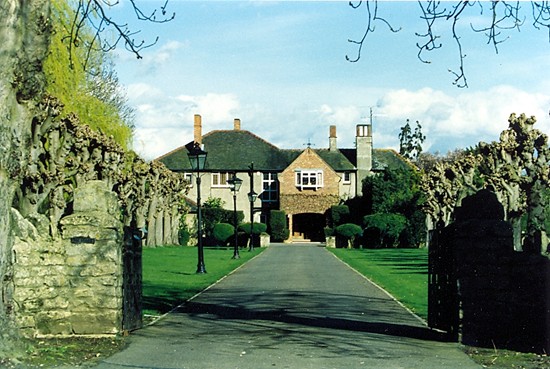 |
|
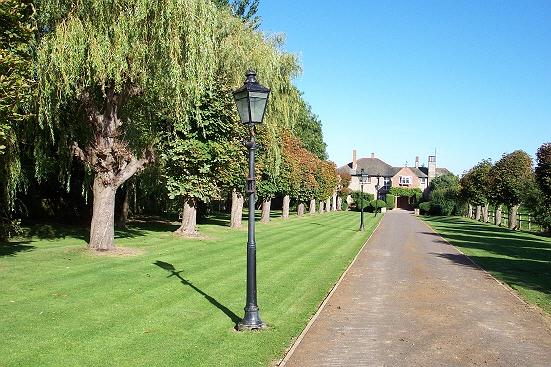 |
|
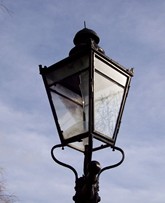 |
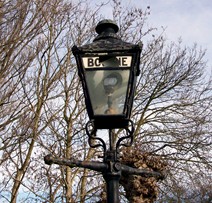 |
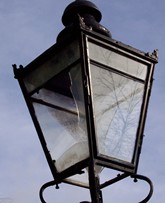 |
|
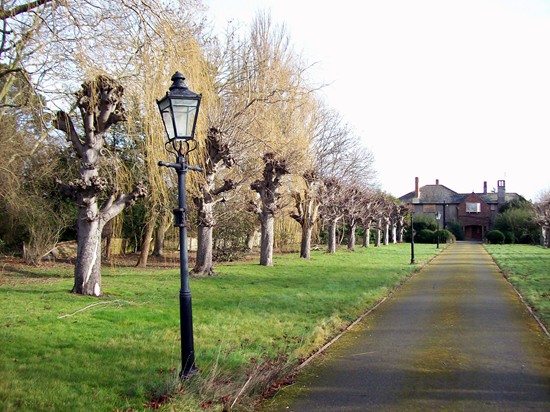 |
|
The Croft with the Victorian lamp standards along the main drive. They
were slightly damaged by vandals while the house was standing empty but
the developers who are building the retirement village have promised to restore them as part of the project
and keep them in situ.
|
|
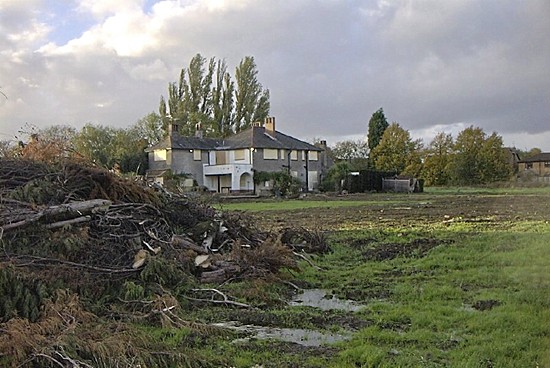 |
|
Once left empty, the main house began to deteriorate
and the surrounding meadowland neglected. Some of the trees were felled
and the entire area began to take on an air of total abandonment. |
|
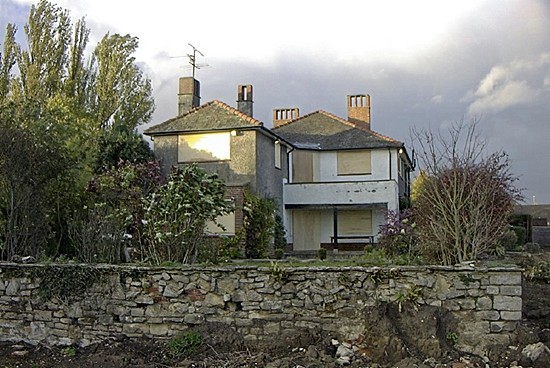 |
|
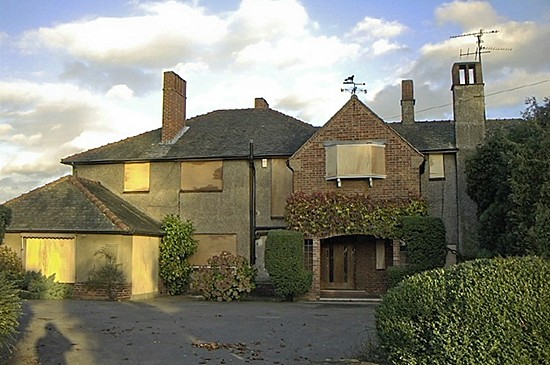 |
|
BOURNE CANNOT
AFFORD TO OWN IT
THE GATES OF The Croft in North Road have been
standing open in recent weeks to reveal an empty and boarded up
mansion surrounded by a lush green space but a large question mark
hangs over its future. The planning tussle over the proposed use of
the meadowland surrounding the property for housing development is
over for the time being although many fear this is only a lull
before a renewed application to build new homes on the site is made
by the developers.
Others are of the opinion that the land will never be built on and
there is even speculation that the property may be given to the town
as a gift, a gesture that would receive widespread public acclaim
because it has already been suggested that the house would be
perfect for conversion into a hospital or hospice, a community
centre or even a small theatre for the performing arts. To donate
The Croft to Bourne would be a magnificent philanthropic undertaking
by the owners but one unlikely to be accepted because the stumbling
block would be money.
Who would take on such a project? Who could afford to contribute the
millions of pounds needed to bring any of these ideas to fruition
for the benefit of the people? We may be surrounded by organisations
that handle large amounts of public money seemingly on behalf of the
community but getting them to part with it for benevolent and
altruistic causes such as this would be well nigh impossible.
The obvious source would be the local authorities to whom we pay our
council tax and who are supposed to provide our public services but
you can forget them. Bourne Town Council’s income is barely bigger
than that of a corner shop while South Kesteven District Council and
Lincolnshire County Council are both struggling to pay increasingly
larger staffs their inflated salaries and index-related pension
entitlements and are having to reduce spending elsewhere to balance
the books.
Perhaps our big charities might chip in, but don’t bank on it. The
Len Pick Trust is dedicated to paying out small sums annually to
selected recipients and that would not include a major seven figure
donation while Bourne United Charities, a much wealthier
organisation, has already jettisoned some of its properties rather
than pay for their upkeep. The Vestry Hall was sold and the Old
Grammar School handed over to the Bourne Educational Foundation
while Baldock’s Mill is leased to the Civic Society and the trustees
are far too committed maintaining their current property holdings to
make a contribution of any substance to a new community scheme in
Bourne.
A hospice at The Croft could be funded by the National Health
Service, I hear you say, but then pigs might fly. This over-staffed
and unwieldy organisation is too busy meeting crisis after crisis
and trying to resolve a current deficit of more than £500 million to
take on any new challenge while the National Lottery Fund can also
be ruled out because that treasure chest is now raided regularly by
the Chancellor to pay for projects that should be funded by
government instead of those which benefit the community directly as
was originally intended.
The outlook therefore looks bleak and if the scenario I have painted
is a little hard to swallow, then consider the Red Hall, an early
17th century property that has become the jewel in Bourne’s
architectural crown. It was bought in 1860 by the Bourne and
Essendine Railway Company for use as a ticket office and
stationmaster’s house when the newly built railway link opened but
when this closed in 1954, this magnificent building became
redundant. It was offered to Bourne Urban District Council, Kesteven
County Council (the former county authority) and South Kesteven
Rural District Council for a nominal £1 but turned down by all after
councillors said it was a useless building and one that should be
pulled down rather than spend public money on it for any other
purpose. Fortunately, not everyone was so unsympathetic and the late
Councillor Jack Burchnell enabled Bourne United Charities acquire
the freehold in 1962 and it survives to this day.
The Red Hall is an important Grade II listed building, The Croft is
not. It is a large but unspectacular house built as a family home in
1922 by a local corn merchant with little to commend it other than
the land on which it stands. If it were offered to Bourne and the
initial obstacles overcome to enable it open in its chosen role, we
would have yet another Butterfield Hospital situation in the making,
with a needed and much loved amenity surviving only through
voluntary help and goodwill. Apart from the capital investment
required to bring the building up to standard, the organisers would
also face an annual demand for upkeep and maintenance and it would
be inevitable that financial advisers might recommend at some time
in the future that the parkland would make excellent housing and
could be sold off piecemeal to fund annual overheads. The wheel
would therefore have turned full circle.
As it is, the developers may consider that they have spent enough
money on trying to obtain planning permission to develop the site,
their many attempts thwarted by opposition from the town, including
a vociferous nimby element living in the vicinity, particularly
Maple Gardens.
If the site is left as it is, The Croft is likely to remain empty
and boarded up, a strange and remote property surrounded by stone
walls and iron gates, and it will soon acquire the mystery of those
large empty mansions so popular in Gothic novels and old Hollywood B
movies. If this happens, it will become the monument to a victory by
the small man over big business but it will be of no benefit to
Bourne.
Reproduced from the Bourne Diary,
Saturday 19th August 2006 |
REVISED JULY 2011
See also
Life at The Croft
Richard Boaler Gibson
The Croft housing controversy
Work gets underway A new lease of life

Go to:
Main Index Villages
Index
|







